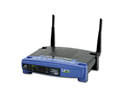'ZDNET Recommends': What exactly does it mean?
ZDNET's recommendations are based on many hours of testing, research, and comparison shopping. We gather data from the best available sources, including vendor and retailer listings as well as other relevant and independent reviews sites. And we pore over customer reviews to find out what matters to real people who already own and use the products and services we’re assessing.
When you click through from our site to a retailer and buy a product or service, we may earn affiliate commissions. This helps support our work, but does not affect what we cover or how, and it does not affect the price you pay. Neither ZDNET nor the author are compensated for these independent reviews. Indeed, we follow strict guidelines that ensure our editorial content is never influenced by advertisers.
ZDNET's editorial team writes on behalf of you, our reader. Our goal is to deliver the most accurate information and the most knowledgeable advice possible in order to help you make smarter buying decisions on tech gear and a wide array of products and services. Our editors thoroughly review and fact-check every article to ensure that our content meets the highest standards. If we have made an error or published misleading information, we will correct or clarify the article. If you see inaccuracies in our content, please report the mistake via this form.
Linksys WRT54G Wireless-G Broadband Router


Linksys WRT54G Wireless-G Broadband Router
pros and cons
- Speeds approaching those of 802.11a at an 802.11b router price
- easy setup.
- One-year warranty
- mixing 802.11b and Wireless-G clients results in poor 802.11b performance
- short operating range compared to that of 802.11b.
Wireless-G, the draft version of the forthcoming 802.11g standard, looks great on paper. Low-cost, high-speed 54Mbps throughput and backward compatibility with 802.11b make you wonder why you'd ever pay for a pricey 802.11a device. Unfortunately, the Linksys WRT54G Wireless-G router doesn't quite live up to expectations. Although real-world wireless performance hovers around 50 percent of almost all wireless-device manufacturers' claims, the WRT54G delivers even less than that. Also disappointing is its operating range, which is considerably shorter than that of an 802.11b router. Worst of all, connect the Linksys WRT54G to both Wireless-G and 802.11b network adapters simultaneously, and its speed bumps down closer to 802.11b levels. Linksys claims this last problem has been fixed by a firmware revision, but when we tested the new firmware, we noticed only moderate improvement. With more firmware updates likely in the future, we recommend that you skip 802.11g for now.
Setup & ease of use
Due to Linksys's huge consumer market share and no-nonsense software, the company's routers have set the standard for easy router setup. The WRT54G is no exception: a tabbed, browser-based utility provides access to all the router's features, with the basic settings summarised in the top Setup tab. As with other more recent Linksys products, the WRT54G also provides a handy first-time setup that walks you through choosing basic SSID, IP address and security settings. Curiously, the PDF user manual doesn't mention the wizard, although it's the first menu choice when you pop in the WRT54G's accompanying CD.
The WRT54G's only significant diversion from the usual setup procedure is the Wireless-G control. By default, the WRT54G is set to Mixed so that both Wireless-G and 802.11b clients can connect. However, given the slow throughput we experienced when connecting to both types of clients simultaneously, you'd be better off setting the router to G-Only and forgetting about backward compatibility.
A helpful quick-start guide gets you rolling. Another nice touch is the complete Windows setup information found in the electronic manual, with separate instructions for Windows 98, ME, 2000 and XP. The manual also provides a brief, clear discussion of DHCP versus fixed IP networks to help beginners make this crucial choice. Linksys continues its practice of putting a short Ethernet cable in the box, so you can just plug in and configure away.
Features & security
Nothing except a small 54G label on the outside of the WRT54G suggests its fancy new Wireless-G innards. Its run-of-the-mill, purple-and-grey Linksys box sports more than the average complement of indicator lights for links and activity, however. Like many wireless routers, the WRT54G is also a four-port wired router, with three indicator lights for each port and two lights covering all wireless connections. If you get into trouble during configuration, a Reset switch returns you to the factory default settings.
The security settings are spread across various screens, with 64-bit and 128-bit WEP encryption available under the configuration utility's Security tab, as well as the virtual private networking (VPN) settings (normally, only businesses go through the complexity of setting up VPNs). In addition, the Setup screen lets you disable the SSID broadcast so that you must enter the router's SSID in a client's setup utility in order to connect. You'll find more security options under the Advanced Wireless tab, including the ability to stipulate shared keys for WEP, which means that any client that connects must use the same WEP key. This may be challenging to set up for beginners, but it provides a little more security than usual.
The Advanced screen also lets you implement MAC address filtering, which restricts network access to a list of devices with those addresses. Were you to combine this feature with shared-key 128-bit WEP and disable SSID broadcasting, you'd have close to the best security available, short of setting up a VPN.
Performance
In Wireless-G mode, the WRT54G averaged 15.6Mbps, a little more than three times the speed of the fastest 802.11b router we've tested and fairly close to the real-world speeds of 802.11a, which hover around 20Mbps. That's pretty cool, considering that 802.11a routers cost roughly double the price of 802.11b routers. Remember, however, that virtually all 802.11a routers feature a turbo mode that bumps up throughput to as high as 30Mbps -- levels that the WRT54G can't touch.
Unfortunately, the range of the WRT54G in our testing was similar to that of 802.11a: 23 metres in a typical office setting. That's roughly 25 percent shorter than a typical 802.11b device's (although range varies widely among 802.11b devices).
The biggest problem with the WRT54G, however, was that when we tested the device with both 802.11b and Wireless-G clients simultaneously, throughput dropped to roughly 6.7Mbps -- closer to the real-world performance that's typical of 802.11b devices.
We tested the WRT54G with the latest firmware revision available on the company's Web site. According to Linksys, the firmware fixes problems with Wireless-G performance drop-offs when 802.11b clients connect at the same time; however, our retest showed only moderate improvement. Linksys boasts that it sold more than 100,000 Wireless-G products in January 2003, which was the first month of sales. We can only hope that forthcoming router firmware updates do a better job of fixing the problem.
Service & support
As with all Linksys products, technical support for the WRT54G has its pluses and minuses. On the downside, there's a short one-year warranty. On the upside, you get free phone support. In addition, the Linksys Web site provides email support along with a wealth of support material, including a massive knowledge base, complete downloads (including manuals and firmware upgrades) for every product, and clear, helpful information about networking in general.